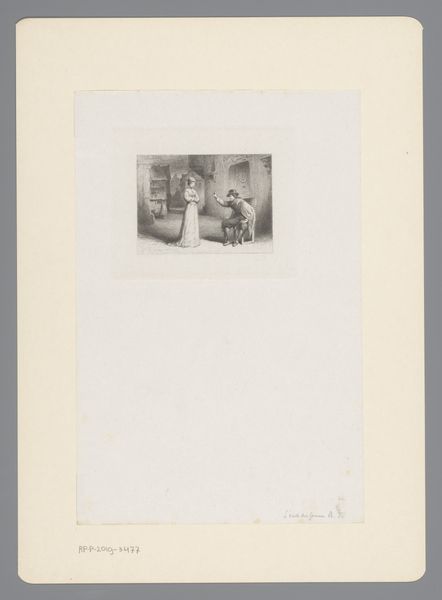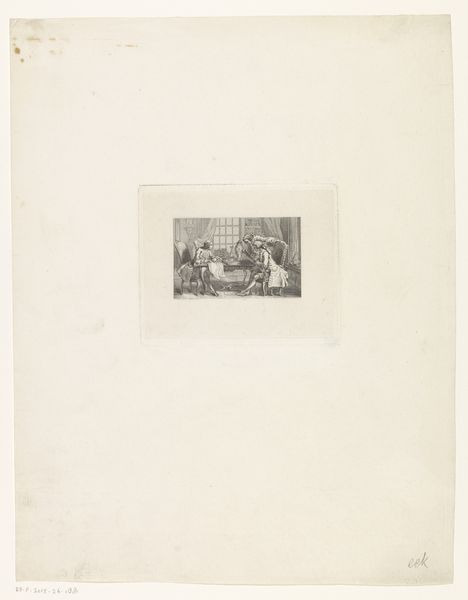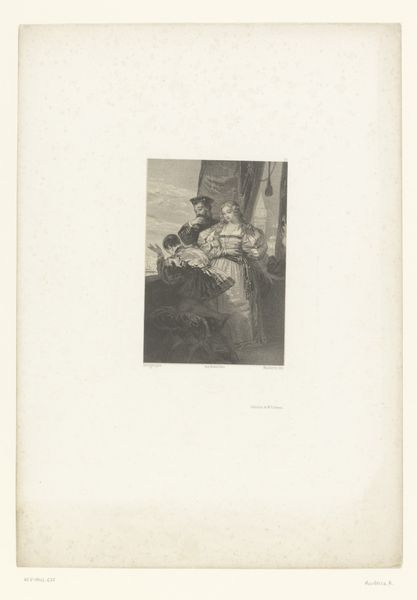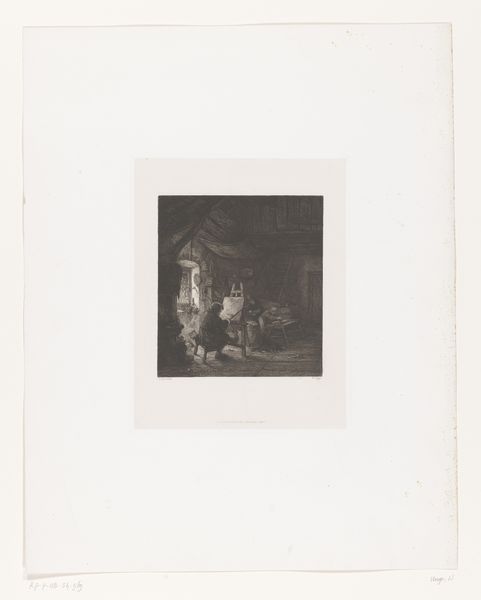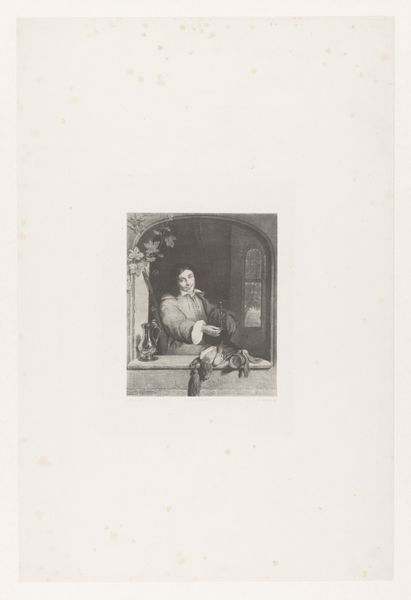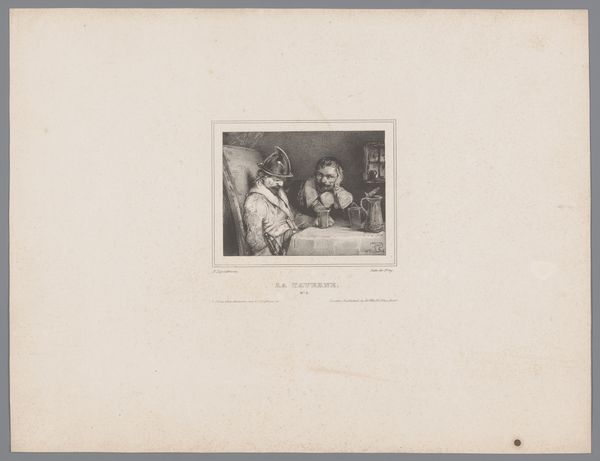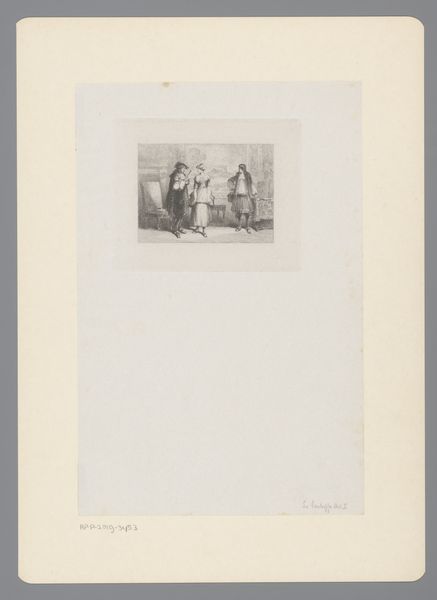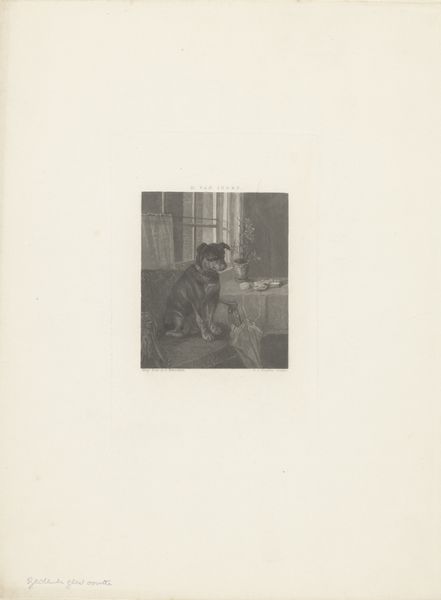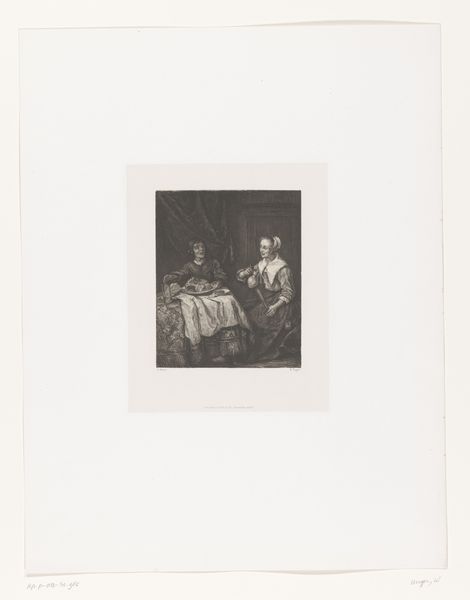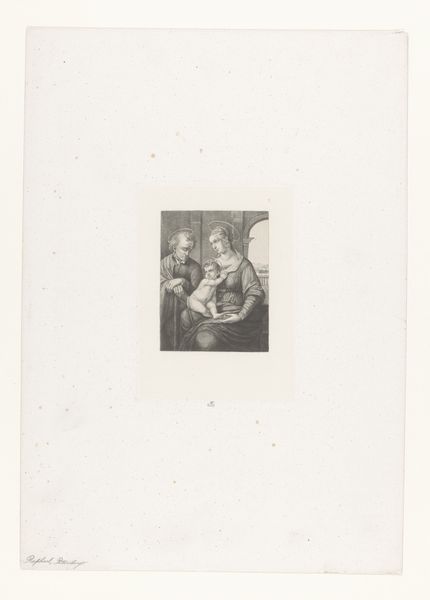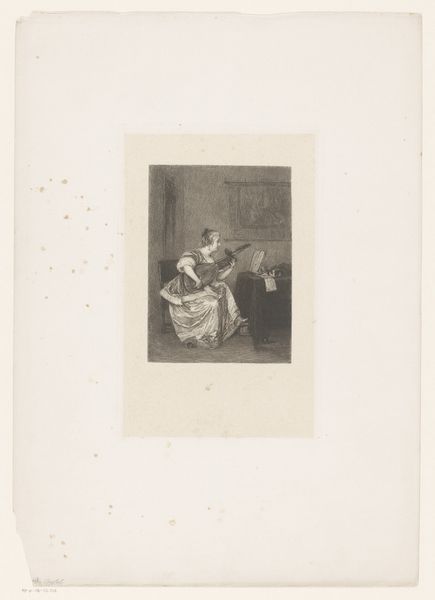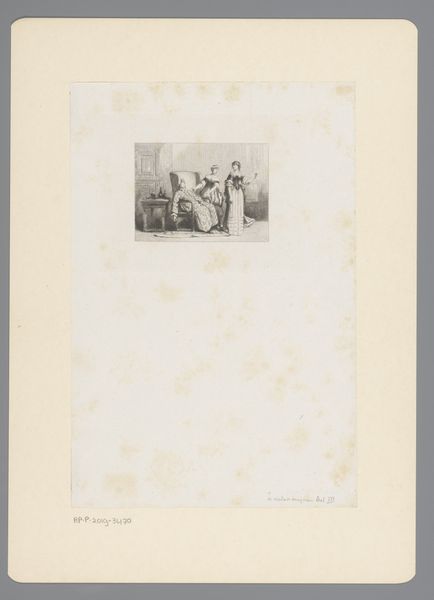
#
photo of handprinted image
#
light pencil work
#
ink paper printed
#
light coloured
#
personal sketchbook
#
ink drawing experimentation
#
ink colored
#
sketchbook drawing
#
watercolour illustration
#
watercolor
Dimensions: height 128 mm, width 96 mm
Copyright: Rijks Museum: Open Domain
Editor: This is "Old Man Reading in a Studio," a print by Felicien Rops from 1881, currently at the Rijksmuseum. It's intriguing, with this lightly-sketched scene of a man absorbed in reading, surrounded by the trappings of an artist's studio. The visible labor behind the image makes it more intimate. What catches your eye when you look at it? Curator: Well, first, I'm drawn to the process of production itself. Rops, a noted printmaker, uses ink and paper, both commodities shaped by specific labor practices in the 19th century. Notice the sketch-like quality, which undermines the preciousness often associated with 'high' art. What does it suggest to you that Rops would depict a scene that's seemingly mundane? Editor: I guess I assumed he was just capturing an ordinary moment, but thinking about it through the lens of labor… perhaps the "ordinary" is itself a construct? A challenge to academic notions of subject matter perhaps? Curator: Precisely! And consider the sitter – is he a scholar or just an old man? The image refuses a simple narrative, diverting our attention towards the materiality of its making. Look at the texture, achieved through printmaking. What kind of labor do you see represented there? Editor: The repetition, the subtle variations from print to print… a form of skilled, almost artisanal work, quite different from the rapid, mass-produced images that were also becoming common. Almost a reverence for the handmade at a time of increased industrialization. Curator: Exactly. The image acknowledges the complex social reality of art production at the time. It's not just about the subject; it's about the means. The material itself tells a story. Editor: This definitely changes how I see it. I was initially just focused on the scene, but the way it was made and the societal implications around its materials are a lot more interesting! Curator: That's the power of materialist analysis. It pulls us back to the tangible world and reveals the hidden histories embedded within the object itself.
Comments
No comments
Be the first to comment and join the conversation on the ultimate creative platform.
